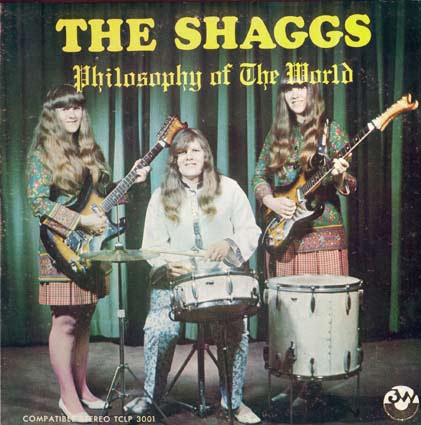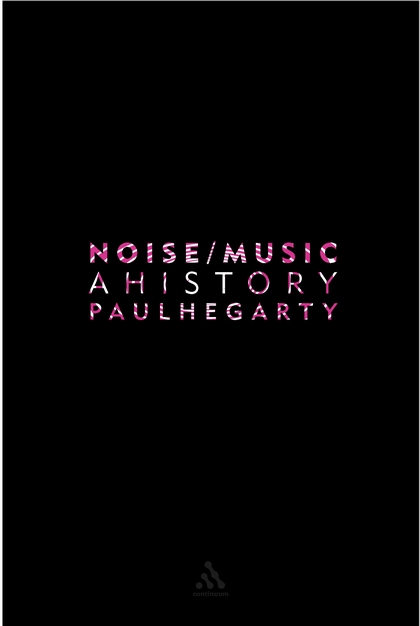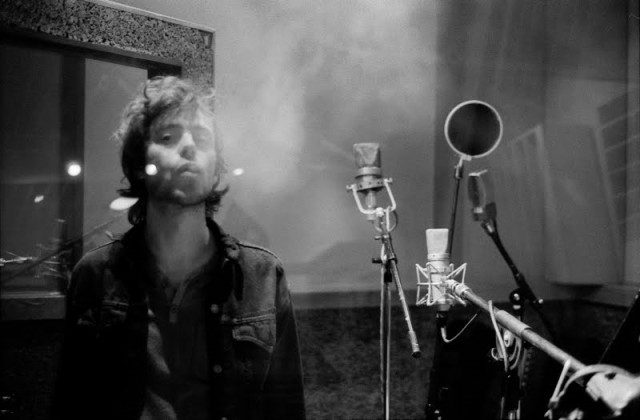A few weeks ago a friend gave me a recording of various albums by reclusive, outsider musician superstar Jandek. If you don’t know anything about Jandek, and you are interested, there is quite a back story involved. A good place to start is with the wikipedia article about him. Although I usually stay away from wikipedia for anything even quasi-“research” related, there is such scant information about the man anywhere that this is pretty much the authority, along with a very detailed fansite, done fastidiously by Seth Tisue (http://tisue.net/jandek/). Seth’s site includes vary detailed descriptions of many of the albums, ordering info and what not in case you are interested.
Basically the story is that there is a guy, living in Houston, Texas, nobody is 100% sure who he is (though his real name is most likely Sterling Richard Smith), and nobody is sure what he does for a living (possibly a machinist)…but basically somewhere along the line this man, whoever he is, began recording music, alone. He releases albums by himself through a label that represents nobody else called Corwood Industries. He has released 51 albums to date since 1978, and up until just recently (2004) NEVER appeared in public. He gave an interview that appeared in the first article of Spin, but other than that has been almost completely anonymous.
Somehow his music was discovered, through all of this. Somehow people became interested in this very strange music. Through the wikipedia article one can find out what they need to know about the mystery that is Jandek, that’s where I learned all that I know about him, and that is not what I would like to concentrate on in this post. What I would like to discuss is one of my favorite topics: “What is music?”
There are two camps of people basically, amongst those that even know about Jandek. The first feel that he is a genius like no other and that he is pretty damn near close to a god walking on this Earth. The other faction feels that what he creates is not music and he should not be held up on this pedestal that fans of outsider music have put him up on. I stand pretty much with the first group, though I often hesitate to throw out the “genius” qualifier.
It is true that this music is like no other, though that is not to say that it doesn’t have its influence from something. It is clear that the lyrics, their content, their form (where there is one) and the style of singing that is totally wrought with intense emotion are derived from the folk and more importantly the blues traditions of the south, namely his home of Texas. This is intense music. I will say that I disagree with the naysayers that feel that Jandek is just making noise, not music, and that he is talentless.
First of all what we need to discuss is not only what is music, but what does one expect from music? This, I feel, is a more important question than anything, it is THE question. Not just regarding music, this question should be asked of everything. What do you expect to take away from any experience that you percieve?
 Listening to Jandek requires one to be an active participant. One can not just passively let the sound wash over them, it is not art that functions in that way. This is not the kind of music that one would put on in the background at a part. This is intensely heartfelt, soul wrenching and usually terrifying stuff. Although it is usually assumed that Jandek does not tune his guitar, if one listens closely it is possible to hear that the guitar is usually tuned to an open tuning of some sort or another, usually something bizarre, most likely of his own devising. The early albums consist completely of open strings on the guitar and a waling vocal. Later works may include other instruments, and violent and dramatic guitar butchering. His left hand attacks the fretboard while he screams out in pain.
Listening to Jandek requires one to be an active participant. One can not just passively let the sound wash over them, it is not art that functions in that way. This is not the kind of music that one would put on in the background at a part. This is intensely heartfelt, soul wrenching and usually terrifying stuff. Although it is usually assumed that Jandek does not tune his guitar, if one listens closely it is possible to hear that the guitar is usually tuned to an open tuning of some sort or another, usually something bizarre, most likely of his own devising. The early albums consist completely of open strings on the guitar and a waling vocal. Later works may include other instruments, and violent and dramatic guitar butchering. His left hand attacks the fretboard while he screams out in pain.
There is no question as to whether or not this is art or not. The fact is, plain and simple, that it is art, an art that appeals to a certain group of open minded individuals. I will be bold enough to say that I am one such of the open minded individuals. One may ask, “where is the melody, where is the harmony, where is the rhythm, WHAT is the rhythm?”….all of the elements of music are in fact there though, I would argue.
The melody is, of course, in the vocal line. The harmony is in the guitar, the rhythm is in the combination of the two. This is where things get complicated: It is not that there is a lack of any of these elements, for there can’t be. You can not have sound, any sound at all without something that can be deemed melody, rhythm or harmony, you just need to redefine it for each instance. The melody is extremely hard to follow, does not repeat usually or regularly and can waver between only a few pitches. The harmony is not able to be defined by roman numeral analysis, such that music theorists may try, or by chord names or anything that has been previously thought of.
In order to appreciate this music on any level at all one must completely set aside everything that they think they already know about music. One has to listen with a fresh perspective, it’s going to ask you what you truly think and know about music, it is truly going to test your limits. I think that someone that comes to discover Jandek is most likely already pretty deep into music and will be willing to listen with an openness that someone who hears Jandek, say, through a friend, may not have.
Jandek is to pop/rock/folk/blues (whatever guitar driven music you can even think to classify it as) what John Cage was to concert music. He is more a philosopher than a musician. It is true that he is telling a story through his lyrics, he is creating a different world for us to visit while we listen and he is definitely amplifying the emotion and meaning of his thoughts through the medium of music. He chooses to do it in such a personal style that nobody could ever duplicate. If you think that his music is just aimless noise then by all means, try to mimic him. You will not be able to. The music is connected to Jandek alone.
Thoughts like this make me wish that I could start my musical training all over again. One of the hardest things to do is to find a voice and style of your own when you decide that you are going to create music. It is so easy to sound derivative, mimicking everything that you take in. Jandek apparently did not get this memo. Without going on for days and days repeating myself I could conclude by saying that everything that Jandek presents to us should shock us.
things to do is to find a voice and style of your own when you decide that you are going to create music. It is so easy to sound derivative, mimicking everything that you take in. Jandek apparently did not get this memo. Without going on for days and days repeating myself I could conclude by saying that everything that Jandek presents to us should shock us.
Another question that comes to mind is: How does music or art of this kind come to be discovered? It is my belief that something this truly originally, and this emotionally shocking will intrigue whoever decides to pay attention. Something of this nature says something about ourselves, not only is is challenging to ourselves, but it is shocking and frustrating because it is art that is telling us something about ourselves that either we did not know about ourselves, or we were repressing for a long time. How did Jandek know this about us? That is the frustrating and angering part, that there can be someone out there that is more in tune with how we feel and what it is to be human than ourselves. If you ever thought you knew yourself well enough, you may now discover that you were wrong. The scariest things sometimes come from within. Imagine carrying around with you something that you were not aware of and then one day someone reaches in and pulls out this shocking, revealing piece of your psyche. Of course you are going to be devastated. This is the music of Jandek.
He is making us question what we would define as music, and all the elements contained therein. He is also forcing us to think about how that would pertain to everything else in our lives. We should always be thinking about our motivations, our expectations and our thoughts about everything and there should never be a single thing that we let slip by unnoticed or unanalyzed. We should be active in our minds at all times, constantly questioning and requestioning everything that we think should be considered a “given”. Not a single thing in life should be taken for granted. Continue reading Listening to Jandek →





 Listening to Jandek requires one to be an active participant. One can not just passively let the sound wash over them, it is not art that functions in that way. This is not the kind of music that one would put on in the background at a part. This is intensely heartfelt, soul wrenching and usually terrifying stuff. Although it is usually assumed that Jandek does not tune his guitar, if one listens closely it is possible to hear that the guitar is usually tuned to an open tuning of some sort or another, usually something bizarre, most likely of his own devising. The early albums consist completely of open strings on the guitar and a waling vocal. Later works may include other instruments, and violent and dramatic guitar butchering. His left hand attacks the fretboard while he screams out in pain.
Listening to Jandek requires one to be an active participant. One can not just passively let the sound wash over them, it is not art that functions in that way. This is not the kind of music that one would put on in the background at a part. This is intensely heartfelt, soul wrenching and usually terrifying stuff. Although it is usually assumed that Jandek does not tune his guitar, if one listens closely it is possible to hear that the guitar is usually tuned to an open tuning of some sort or another, usually something bizarre, most likely of his own devising. The early albums consist completely of open strings on the guitar and a waling vocal. Later works may include other instruments, and violent and dramatic guitar butchering. His left hand attacks the fretboard while he screams out in pain. things to do is to find a voice and style of your own when you decide that you are going to create music. It is so easy to sound derivative, mimicking everything that you take in. Jandek apparently did not get this memo. Without going on for days and days repeating myself I could conclude by saying that everything that Jandek presents to us should shock us.
things to do is to find a voice and style of your own when you decide that you are going to create music. It is so easy to sound derivative, mimicking everything that you take in. Jandek apparently did not get this memo. Without going on for days and days repeating myself I could conclude by saying that everything that Jandek presents to us should shock us.